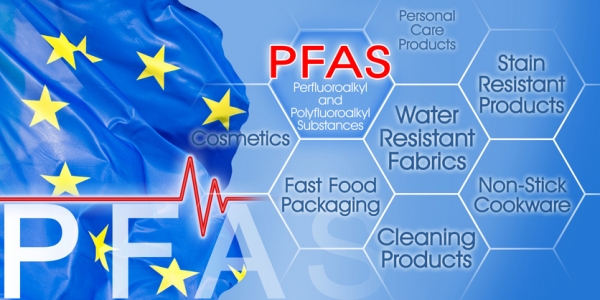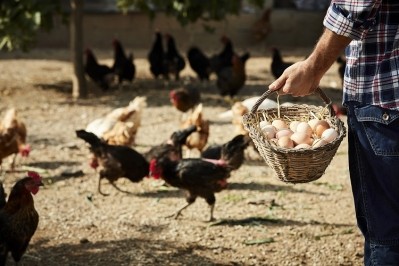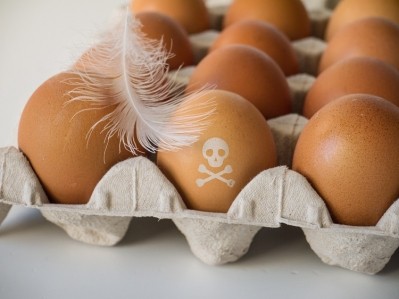When will EU set limits on 'forever chemicals' in feed?

Current EU regulation places caps on four PFAS compounds in meat, poultry, fish, and eggs destined for or produced within Europe.
There are no PFAS maximum limits set for feed yet.
"There is also a requirement for more sensitive PFAS analytical methods to assess PFAS levels in feed accurately," explained Craig Simpson, a food and feed regulatory specialist at Keller and Heckman, speaking at a conference run by that organization in March.
DG Santé’s Frans Verstraete told FeedNavigator today that a deadline of June 2024 is looking likely for the adoption and publication of PFAS monitoring recommendations that are tailored for feed in the EU.
In 2021, the German Federal Institute for Risk Assessment (BfR) conducted investigations to determine if naturally occurring PFAS levels in feed could surpass regulatory limits. Its findings suggested a need for enhanced detection methods to comprehensively assess PFAS levels in feed.
The European Reference Laboratory (EURL) has been focused on bolstering such analytical capabilities for the detection of PFAS in both food and feed for several years.
In the absence of feed monitoring guidance, certain provisions regarding feed have been incorporated into the existing food recommendations. EU countries with the necessary analytical capabilities have been encouraged to monitor PFAS levels in feed, while countries lacking these capabilities were urged to initiate validation procedures for PFAS analysis methods in feed through laboratory validation efforts.
"From the discussions we have had it is clear that member states are monitoring the presence of PFAS in feed and that they are building up analytical capacity," remarked Verstraete.
Forever chemicals
Nicknamed “forever chemicals”, PFAS resist environmental breakdown. The properties that made those chemicals into an industrial success also led to their persistence and bioaccumulation, and farmed animals may be exposed to PFAS via contaminated water, soil, substrate, air or food, as reported in Science of The Total Environment.
“As PFAS were widely used for many decades their presence is evident globally, and their persistence and potential for toxicity create concern for human, animal and environmental health,” wrote the authors of that paper.
Photo credit: GettyImages/Francesco Scatena
Fishmeal contamination
PFAS contamination in fishmeal, a common ingredient in animal feed, led to elevated PFAS levels in eggs from organically raised chickens last year, as highlighted in an alert from the Technical University of Denmark’s National Food Institute (DTU).
Simpson noted the complexity of addressing PFAS contamination in fishmeal due to the diverse sources of these chemicals. Furthermore, the transfer of PFAS from feed to animal products varies, with farmed fish fed on fishmeal exhibiting lower uptake compared to chickens fed the same ingredient, he said.
Following the DTU's findings, the European Fishmeal and Fish Oil Producers (EFFOP) worked to identify risk areas and assess how fishmeal from these regions aligns with current EU regulations.
The trade group announced in August last year that it had submitted a “comprehensive dataset” profiling (PFAS) in fishmeal to the European Food Safety Authority (EFSA).
The move was in direct response to EFSA’s call for continuous collection of chemical contaminants occurrence data in food and feed; EFFOP said the submission comprises data from 175 distinct fishmeal batches. “We've proactively engaged with journalists, policy makers, scientists, and the public, fostering a comprehensive understanding of the implications surrounding PFAS contamination.”
The fishmeal industry representatives claimed the dataset it shared would be a foundational resource for well-informed risk assessments, laying the groundwork for risk management strategies concerning future PFAS levels in feed.
PFAS levels are now routinely assessed for each fishmeal batch by producers and are available upon customer request, according to EFFOP.

![Perfluoroalkyl and Polyfluoroalkyl Substances (PFAs), used across a range of industries from aerospace and cookware to textiles and cosmetics, are considered 'forever chemicals' that persist in the environment, contaminating ground water, soil, plants and even animals and humans [Getty Images]](/var/wrbm_gb_food_pharma/storage/images/_aliases/wrbm_medium/publications/cosmetics/cosmeticsdesign-europe.com/article/2023/02/07/eu-pfas-ban-proposal-annex-xv-restriction-published-by-echa-set-to-go-to-european-commission/16149725-1-eng-GB/EU-PFAs-ban-proposal-Annex-XV-Restriction-published-by-ECHA-set-to-go-to-European-Commission.jpg)












